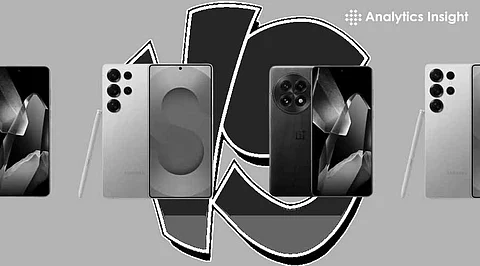

The 2025 smartphone showdown is here, and two Android powerhouses are battling for the crown. The Samsung Galaxy S25 Ultra and OnePlus 13 boast the latest Snapdragon 8 Elite, lightning-fast RAM, and cutting-edge AI features. But what truly sets them apart is their camera capabilities, with the Samsung Galaxy S25 Ultra offering a more versatile setup featuring a 200MP flagship sensor, 50MP ultrawide, and 50MP periscope zoom, while the OnePlus 13 impresses with a 50MP core camera, 50MP ultrawide, and 50MP 3x optical zoom. While both smartphones deliver exceptional camera performance, Samsung's superior zoom and AI smarts give it a slight edge. Which one deserves to be in your hands?
Let’s break it down.
S25 Ultra: 200MP flagship sensor for the highest detail, 50MP ultrawide to capture bigger scenes, 50MP periscope zoom 5x for extreme zoom, 10MP telephoto 3x for added precision, and a 12MP selfie cam to keep your front shots flawless.
OnePlus 13: 50MP core camera for well-balanced photos, 50MP ultrawide to get everything in, 50MP 3x optical zoom for clear magnification, and a 32MP selfie shooter for detailed self-portraits.
Samsung packs versatility with superior zoom, AI smarts, and pro video tools. OnePlus 13 impresses with computational photography, but Samsung steals the show for long-range shots and creative content.
Let’s explore the other features to find out which one redefines the flagship experience and, most importantly, which one deserves to be in your hands.
S25 Ultra: Stays true to its signature boxy design, now tougher with Corning Gorilla Armor 2.
OnePlus 13: A refined yet rugged build, featuring an IP69 rating for protection against intense water pressure and steam.
For those needing a phone that can handle extreme elements, OnePlus 13’s durability stands out.
S25 Ultra: 6.9-inch QHD LTPO AMOLED, 120Hz refresh, sharp details, vivid colors
OnePlus 13: 6.82-inch QHD LTPO OLED, 120Hz refresh, stunning clarity, rich contrast
Both displays impress, but Samsung’s precise color tuning and superior brightness make it shine, especially in direct sunlight.
Samsung’s AI software (powered by Google Gemini integrations) enables seamless cross-app actions, advanced photo editing tools, and even real-time transcription.
OnePlus 13 focuses on speed and efficiency, sticking with a clean OxygenOS UI that offers a snappy, no-bloatware experience.
Samsung’s AI integration pushes boundaries, yet OnePlus 13 stands out with a leaner, faster experience free from excessive background processes.
Galaxy S25 Ultra: 5,000mAh, 45W wired / 15W wireless.
OnePlus 13: 6,000mAh, 80W wired / 50W wireless.
This one is clear-cut. OnePlus 13 dominates with a larger battery and superior charging speeds, charging twice as fast as Samsung’s flagship. If battery life and fast charging matter to you, OnePlus 13 is the better choice.
The S25 Ultra comes with an S Pen, perfect for sketching, note-taking, and precision input. However, Samsung removed wireless functionality from this year’s S Pen.
OnePlus 13 undercuts Samsung on price, starting at $899 vs. Samsung’s $1,299, offering better raw performance per dollar spent.
If you need the S Pen, Samsung wins. But if you’re looking for a flagship powerhouse at a lower price, OnePlus 13 is unbeatable.
Choose the Galaxy S25 Ultra if you want the best camera system, S Pen functionality, and Samsung’s AI-driven ecosystem.
Choose the OnePlus 13 if you need better battery life, ultra-fast charging, and flagship performance at a lower price.
Both are phenomenal devices, but your decision comes down to what matters most to you.
